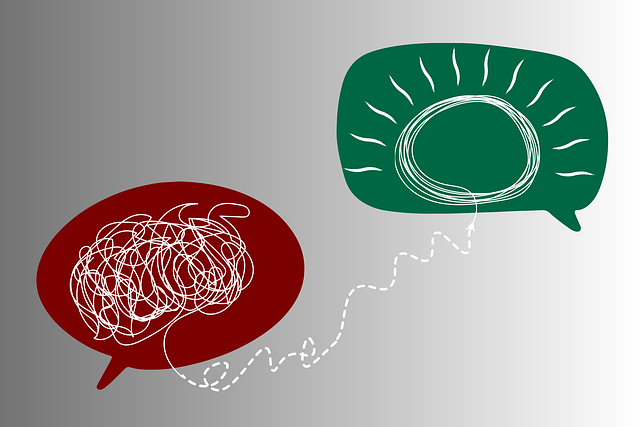
Fitness & Mental Health: A Match Made in Heaven
Feeling low and unmotivated? Need some outside support to get your motivation back on track? Exercise and mental health go hand-in-hand, and it is time to break down the barriers holding us back from harnessing that powerful duo. Read on to discover the ways that fitness and mental health can be a match made in heaven.
List of Content
- 1. What Does It Mean to be Physically and Mentally Fit?
- 2. The Big Picture: Uniting Physical and Mental Wellbeing
- 3. Fitness and the Brain: A Winning Combination
- 4. Research-Backed Benefits of Uniting Physical Activity and Mental Health
- 5. Harnessing the Power of Fitness for a Better Mindset
- 6. Taking the First Steps Towards Integrating Mind and Body
- You Ask, I answer

1. What Does It Mean to be Physically and Mentally Fit?
Being physically and mentally fit is the goal of many. While you may not be a professional athlete or competitive champion, there are lots of simple ways to take care of your physical and mental health to live a long and fulfilled life.
Physical Fitness: To be physically fit, you must be able to manage your own body and perform movements that you can sustain over a period of time. This includes activities like cardiovascular exercise, strength training, flexibility, and balance. If you want to take your physical fitness to the next level, you should also be mindful of your nutrition and hydration.
Mental Fitness: To achieve mental fitness, you need to be able to think clearly and rationally, stay focused on tasks, respond to stress in a healthy way, and remain emotionally strong. There are many ways to work on your mental fitness, including:
- Meditating or practicing mindfulness
- Exercising or participating in physical activities
- Making a self-care plan
- Eating nutritious foods
- Getting enough sleep
- Finding ways to relax and reduce stress
Physical and mental fitness are not only important for your overall wellbeing, but they can also be beneficial in helping you reach your goals and live a long, healthy life.

2. The Big Picture: Uniting Physical and Mental Wellbeing
The correlation between physical and mental wellbeing is increasingly harder to ignore. Our body and mind are intimately linked, so when one is out of balance, it’s inevitable that the other will suffer too. The concept of holistic wellness is all about recognizing this connection and weaving physical and mental health practices together in a way that benefits both.
What holistic wellness means in practice:
- Nurturing a healthy relationship with food – As long as nourishing your body in a way that feels good to you remains the focus.
- Adapting to changes and embracing imperfections – Rather than striving for a mythical body ‘type’, holistic wellness resonates with accepting where you are.
- Making informed decisions – Rather than adhering to trending fads and superfoods, look to eat foods that promote physical health as well as mental wellbeing.
- Finding purpose & meaning in physical activities – Finding ways to move your body that bring you joy are key.
This is because emotional distress can impair our physical state, and vice versa.
It’s essential that we look at both how our thoughts and our bodies can affect our wellbeing and create a balance.
Integrating mental health practices into our daily routines will contribute to improved physical wellbeing and incorporate strategies that help us cope.
For example, if we feel stressed, the physiological response of our body is an increase in heart rate, breathing rate, and cortisol. However, exercising regularly or practicing yoga can help our bodies and minds to stay healthy, aiding us in managing stress, in a natural and simple way.
3. Fitness and the Brain: A Winning Combination
You already know the physical benefits of regular exercise, but there’s also much to be said about the mental boost too. A regular fitness routine has been linked to improved brain health, and improved cognitive function. Here’s a look at what you can expect from pairing physical and mental health.
Better Brain Performance. The physical pressures of a good workout helps stimulate the brain’s performance. As the heart pumps at a more accelerated rate, the brain is able to deliver the blood and oxygen more efficiently, giving a boost to alertness and cognitive functions.
Increased Focus. Working out can help with concentration and focus. When you dedicate time to a physical activity, your brain has a chance to clear away distractions and concentrate on the moment – allowing your mind to concentrate on the task at hand.
Enhanced Mood. Exercise causes the release of neurotransmitters like serotonin, which can help regulate your emotions and feelings of well-being. It can also reduce stress levels and raise endorphin levels, making you feel happier and more productive.
- Regular exercise can help you stay mentally sharp and focussed.
- Neurotransmitters are released during physical activity which help to regulate emotions.
- Improved blood flow to the brain provides more energy and alertness.
- Physical activity can increase endorphins for a longer lasting emotional feel-good.
4. Research-Backed Benefits of Uniting Physical Activity and Mental Health
1. Stress Relief
Exercise has long been known as a way to release stress – and for good reason. It’s been shown to reduce cortisol (a hormone related to stress), increase endorphins (the “feel good” hormones released after exercise), and boost serotonin (a neurotransmitter associated with positive mood). Plus, when you’re focusing so much on the physical activity, it’s easy to forget about the worries of the day.
2. Improved Cognitive Function
Exercising can have a huge impact on cognitive functioning – that is, the actual processes the brain needs to do its job. Benefits range from improved concentration and creativity to better problem-solving skills and quicker reaction times. Regular physical activity also preserves your brain’s ability to function fully as you age.
3. Enhanced Self-Esteem
When you regularly exercise, it’s easy to see how it’s helping you both physically and mentally. You can see your body changing for the better, and notice the non-physical benefits, like feeling happier and less anxious. This can lead to a major boost in confidence and self-esteem.
4. Better Sleep
One of the most important aspects of healthy mental health is getting quality sleep. Fortunately, physical activity can improve things in this department as well. Research has shown that regular exercise can lead to improved sleep quality, in addition to helping you fall asleep faster and more easily.
5. Harnessing the Power of Fitness for a Better Mindset
Focusing on Fitness and Well-Being
Fitness can have a profound effect on your mindset. Exercise helps release hormones and can lead to improved mental health over time. Having a routine where you spend at least a few minutes each day doing something active can be immensely helpful in improving your state of mind.
Weight-training specifically is a great exercise to focus on because it not only increases your physical strength, but also brings about an increased sense of wellbeing. When we make time to take care of our bodies, our minds reap the rewards.
Additionally, there is an important relationship between physical and mental fitness. Focusing on exercise can give us more energy to do what we need to, and also helps us to relax. When we are able to take a step back from our lives, and treat ourselves to a little self-care, our overall wellbeing can drastically improve.
These are a few examples of how to harness the power of fitness for a better mindset:
- Start out with a stretching routine.
- Make time for a brisk walk each day.
- Set a goal to do resistance exercises 3 times a week.
- Incorporate some mindfulness activities into your fitness regimen.
Fitness can be a powerful tool to help us build resilience, increase our energy, and maintain a balanced mindset. When we make time to take care of our bodies, our minds will thank us.
6. Taking the First Steps Towards Integrating Mind and Body
1. Connect to Your Breath: By connecting to your breath, you can reach a deeper level of awareness of your body and its movements. Focus on the rhythm of the breath and follow it as it moves through the body. You can also practice mindful breathing by focusing on the air entering and leaving your nostrils and being aware of the movement of your lungs and abdomen. This can help to synchronize the movements of your body, allowing you to explore a deeper sense of presence.
2. Release Tension: Another key step is to release physical and mental tension. This can be done through yoga and relaxation techniques such as stretching and releasing the muscles in the body. You can also practice deep breathing exercises, relaxation techniques, and visualization to help you become aware of any tension in your body. Stretching can help to ease tension, improve flexibility, and restore balance in the body.
3. Incorporate Movement: Once you’ve connected to your breath and released tension, you can start to bring movement into your routine. This can be a great way to bring awareness to how your body feels and to integrate your body and mind. Try incorporating walking, dancing, and Tai Chi into your practice to help you stay connected to your body, while developing a sense of connection between your body, emotions, and spirit.
4. Practice Mindful Living: Mindful living is the practice of being aware of the present moment and living each moment with intention. This can enable a connection with your body and its movements and bring forth a new level of self-awareness. There are many ways to practice mindful living, such as:
- Focusing on the present moment
- Tapping into your senses (sight, sound, taste, smell, touch)
- Practicing gratitude and positivity
- Engaging in meaningful conversations
Mindfulness can help to bring about a sense of peace and ease in your life.
You Ask, I answer
Q: What is the connection between physical fitness and mental health?
A: Research has indicated that there is a strong relationship between physical fitness and mental health as both play an important role in overall wellbeing. Physical activity has been linked to improved cognitive functioning, decreased symptoms of depression and anxiety, better sleep, and increased self-esteem.
Q: What are the benefits of exercising for mental health?
A: When it comes to mental health, physical activity has been linked to improved cognitive functioning, decreased symptoms of depression and anxiety, better sleep, increased self-esteem, improved emotional regulation, and enhanced feeling of well-being. Exercise can also be used as an effective way to reduce stress and improve focus.
Q: How much physical activity is recommended?
A: The World Health Organization (WHO) recommends that adolescents aged 13-17 do at least 60 minutes of moderate-intensity or vigorous-intensity physical activity daily, while adults 18 and older should aim for 150 minutes of moderate-intensity or 75 minutes of vigorous-intensity physical activity each week. To help ensure these guidelines are met, it’s a good idea to incorporate some form of physical activity into your daily routine.
Q: What types of exercises are recommended for mental health benefits?
A: In terms of activities, you should choose whatever you enjoy in order to maximize the benefits of exercise for mental health. Walking, running, cycling, swimming, yoga, and strength training have all been linked to improved mental health outcomes.
We’ve seen that regular exercise and proper mental health are related and contribute to each other. When we look after our bodies, our minds benefit and our mental health improves. Conversely, when look after our mental health, it can help to get us motivated to exercise which is essential for good overall health. With this in mind, it is clear that fitness and mental health are indeed a match made in heaven!
